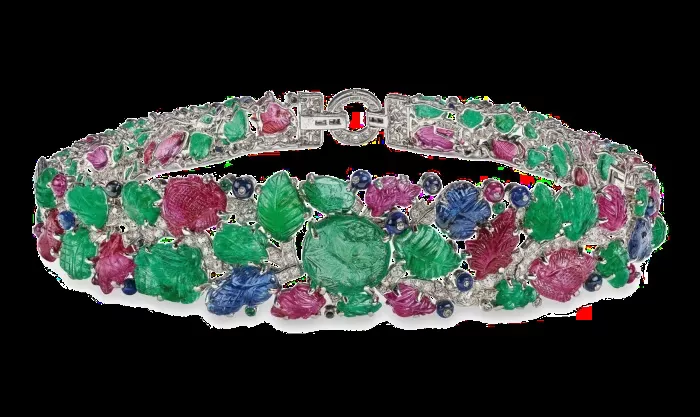A new exhibition at London’s Victoria and Albert Museum (V&A), opening on April 12, highlights how the Cartier brothers were inspired by ancient civilizations in their jewelry creations. The exhibition will showcase the brothers’ deep curiosity about the past, and how their travels and studies in art and history influenced their groundbreaking designs.
The Cartier brothers, known for their global travels, collected art books about early civilizations, which sparked the creation of new jewelry styles. They were among the first modern jewelers to draw from history to produce something both fresh and innovative. Their iconic Tutti Frutti collection, which was inspired by Mughal art, stands as one of their most famous works.
Louis Cartier, along with his team of designers, explored different cultures and their histories to find unique sources of inspiration. Throughout Europe, the jewelry designs of past eras, like the Middle Ages, were shaped by Byzantine influences, while Renaissance jewelry in Eastern Europe was marked by the trade of styles along the Silk Road.
In today’s world, the trend of revisiting historical styles is still strong. Italian fashion house Dolce & Gabbana’s Alta Gioielleria collections pay homage to the Renaissance by recreating miniature portraits of figures such as Beatrice D’Este, the Italian noblewoman. These portraits are set in jewels and worn as large pendants, similar to how they were worn during the Renaissance.
The brand’s Greek-inspired high jewelry collection also includes elements like micro-mosaics and Hellenistic coins. This collection is currently on display at the Grand Palais in Paris as part of the “Du Coeur à la Main” exhibition, which runs until April 2.
In Athens, Ilias Lalaounis spent decades building a museum dedicated to classical Greek and Byzantine treasures, which served as the foundation of his jewelry brand. “Our creations are deeply inspired by ancient Greece,” says Demetra Lalaounis, director and daughter of the brand’s founder. “Living in Greece, the inspiration is all around us every day.”
Ilias Lalaounis’ daughter, Maria, who serves as the brand’s creative director, brings ancient techniques such as hand-woven filigree and hand-hammered gold finishes into her modern designs. By experimenting with volume and the texture of gold, she creates pieces that are both contemporary and wearable.
Similarly, Indian jeweler Krishna Choudhary of Santi draws inspiration from his family’s gemstone collection in Jaipur. He incorporates the geometry and design of 16th and 17th-century Mughal art into his jewelry, creating modern heirlooms with a traditional soul. “I want my jewelry to feel subtle yet still embody the essence of Mughal design,” Choudhary explains.
Choudhary’s designs, such as a large portrait-cut diamond set in a hexagonal pendant, use modern, industrial-style settings, but retain Mughal-inspired patterns. He often combines matte-finished metals like dark titanium with rose gold for a contemporary edge.
The Materials of the Old World collection by Glenn Spiro and his son, Joe, shows how they combine rare stones with ancient artifacts to create modern jewelry. Their collection features unique elements such as gold Baoulé decorations from West Africa and antique amber jewels, often fused with classical designs.
“We spend a lot of time sourcing these materials, often traveling far and wide,” says Joe Spiro. “Our work is all about finding the right balance between old and new.”
This fusion of old and new is evident in their designs, where contrasts between materials create striking visual effects. “The relationship between old and new, black and white, creates something symbiotic,” adds Joe.
Hong Kong-based jeweler Austy Lee also uses antiques to inspire his jewelry creations. He frequently attends antique fairs in Japan, searching for elements such as Japanese menuki, shakudo, lacquerware, and Satsuma-ware. These are then incorporated into modern earrings and brooches, blending cultural history with contemporary jewelry design.
“My collection reflects fragments of history and culture,” says Lee. “Each antique piece tells a unique story, and by studying them, I can create new, bold designs.”
From the past to the present, these jewelers prove that ancient treasures can continue to inspire and shape the future of jewelry design.
Related topics:
- K. Hollis Jewelers Marks 20 Years with Anniversary Celebration
- Shola Branson’s Ethically Crafted “Fragments” Collection Debuts at Sotheby’s Paris
- Trump’s Tariffs Pose Threat to India’s Diamond and Jewelry Exports


